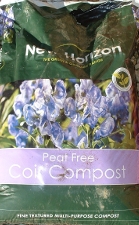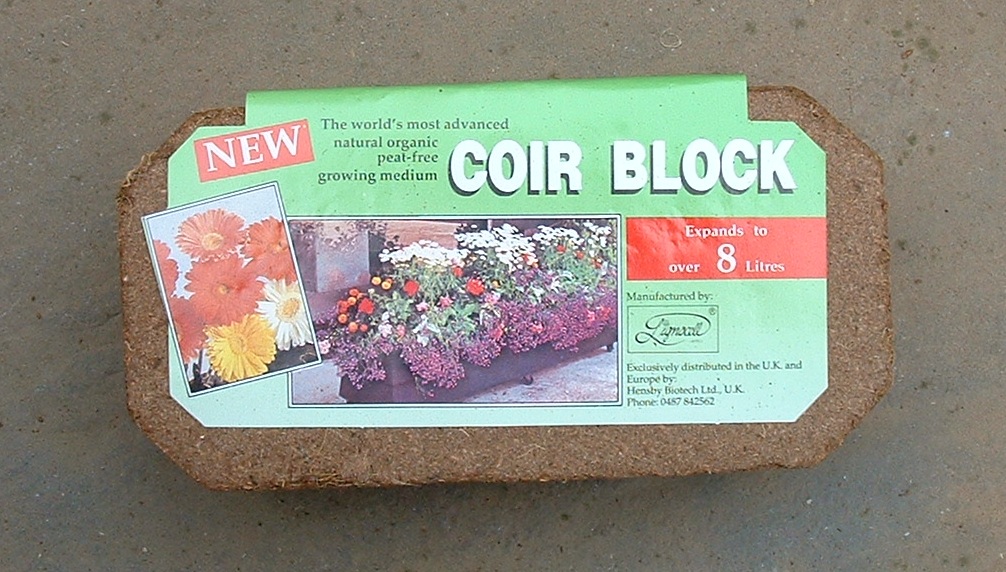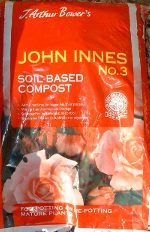Agave Potting Mixes.
Expectations.
In their natural habitat on rocky slopes ,lava outcrops and limestone cliffs, agaves enjoy good drainage and an adequate supply of air to their root system. Once removed from their natural habitat and constrained by a pot or container, agaves are wholly dependent on us to provide the right quantities of food, water and light under favourable growing conditions if they are to give their best.
Commercial 'cactus mixes' are sometimes available but can be quite expensive when working with larger pot sizes. The other option is to make up your own compost from ingredients that are available locally and many people like to create their own special recipe for their plants. When agaves are cultivated out of their natural habitat, the potting mix that you provide should at least have the following key characteristics by :-
- Allowing excess water to drain away quickly,
- Having cation exchange capacity to absorb and release nutrients,
- Retaining enough moisture for the plant needs between watering,
- Providing good anchorage for the roots,
- Allowing sufficient air to the root system.
Commercial Potting Composts.
There are generally four types of potting mixes readily available in U.K. garden
centers, each has it's own characteristics which may or may not be suitable for agaves.
- Peat based or multipurpose compost,
- Soil or Loam based compost,
- Composted green waste,
- Coir compost,
The type of soil mix used is much a case of personal preference and that of local availability. The overriding criteria is for a free draining mix that will not compact and stay water logged for extended periods following watering. Most commercial potting mixtures can be used with some added material to improve drainage. A good test is to compact a ball of moderately moist compost in the palm of the hand, the compacted soil should then easily crumble apart again without too much effort.
Peat Based Compost.
There are many peat based mixes available which, when fresh have excellent moisture retention capacity. They can however become water logged all too easily, particularly for plants in larger pots kept outdoors during the summer months. Care must be taken to ensure adequate drainage. Peat based mixes are also difficult to wet after being allowed to dry out. The nutrient content can also become exhausted sooner than would be in the case of soil based mixes. For plants that remain in the same pot for more than a year, breakdown of the organic matter and subsequent changes in soil structure should be considered. Many soil based pests also prefer peat based mixes notably the vine weavel and its destructive larvae. Due to environmental concerns, alternative peat free mixes are becoming available from composted green waste although the quality seems quite variable. The same comments as for peat based product apply.
Coir Fiber Pith.

Coir Fiber Pith in compressed forms is also known as Cocobased compost and is a by product from the coconut industry where the husks are processed for the extraction fibres. The remaining material, of non-fibrous particles and very small fibres are collected and dried thoroughly before being compressed convenient sized blocks. Re-hydration of the blocks with water expands the material up to 8 times it's volume ready for use. This process results in an environmentally friendly and renewable source of growing medium. Coir has a number of advantages over peat base products, better wetability, less shrinkage, and slower breakdown which can be a benefit where plants can remain in the same container for more than one growing season. There is little in the way of available nutrients in this material as it comes and one way to boost the nutrients is to rehydrate the blocks using half strength liquid feed. Because of its low pH(4.6-6.4), some ground limestone may be needed as is the case with peat based composts. CFP has a high lignin content. Lignin is an organic substance that, with cellulose, forms the chief part of woody tissue. It is the lignin that provides the resistance to rapid breakdown.
 |
Compressed Coir Block. |
Some manufacturers are now producing more complete and ready to use composts based on coir with balanced pH and added fertiliser.
Soil based potting mixtures.

Soil based potting mixes as usually based on the John Innes formulae and come in at least 3 different mixes depending on the intended use. At this stage the mix is the same with differing levels of nutrients to suit different plants. This mixture can easily be opened up by adding one third by volume of coarse horticultural grit or pearlite. For plants that prefer some additional water retention, a small amount of organic matter, peat or leaf mould, can be added to the mix. Beware of old stock lying around in some garden centers. John Innes Composts are a blend of carefully selected loam or topsoil, sphagnum moss peat, coarse sand or grit and fertilisers. The loam is screened and sterilised and then thoroughly mixed with the other ingredients in proportions designed to achieve the optimum air and water-holding capacity and nutrient content for different types and sizes of plants.
In the mid 1930's the formulae for the 'John Innes Composts' were developed to provide a sterile, well-balanced growing medium for experimental plant material.These formulae were subsequently released to the public and dominate the compost market in the UK.
The main ingredients are;
- Loam: this is the most important ingredient in the compost, it also forms the base of plant nutrition by supplying clay, which has a cation and anion exchange capacity to absorb and release nutrients. Loam also contains essential trace elements and some organic matter which provides a slow release of nitrogen.
- Peat: increases the total porosity and improves both the aeration and the water-retaining capacity. Peat decomposes slowly into humus.
- Sand: The coarse sand or grit is used as a physical conditioner to improve drainage. It also helps to provide anchorage for roots.
- Fertiliser: a balance of NPK and other essential trace elements.
Sadly there are some poor imitations around with dubious content. The John Innes formulae was never patented so any one appears to be able to use the John Innes name regardless of the quality of their product. Look for brands bearing the JIMA seal of approval to be assured of a product of reasonable quality. The John Innes Manufacturers Association(JIMA) seal of approval is a registered trademark and can only be used by registered manufacturers.
The Final Mix.
Now that we have all of the ingredients to hand, they need mixing together in the right proportions. For a number of years I used one part pearlite,two parts John Innes No.3 and a handfull of Coir which worked very well except for the pearlite floating up during watering and contaminating the top dressing. Modern soil based composts contain far too much peat and lumps of unknown organic matter for my tastes and in the worst case they turned out to be difficult to re wet during watering.
The mix that I am currently using is derived from good quality sterilised top soil in the following proportions,
- 3 parts sterilised loam or top soil
- 1 part coir fibre pith
- 1 part LECA or Danish Molar Clay (Tesco Premium Lightweight Cat Litter)
- 2 parts potting grit (Eco Aggs)
 |
Ingredients ready for mixing. |
For each litre of final mix, I then add at the time of potting,
- 0.6g ground limestone
- 2.5g Osmocote (NPK=14-13-13)
- 3g Fish,Blood and Bone (NPK=4-3-4)
There should be enough food there for one season. If plants are to remain in the same pot for a second season then a liquid feed should be given about once a month. The reason for me using Osmocote is to give the plants a good start in spring because this will release nutrients as soon as the soil warms up. During the first month or so, there would have been little breakdown of the slow release organic fertiliser because of pots being kept dry between waterings and because the top soil used would have been sterilised during production.
On the next page we take a look at drainage.



